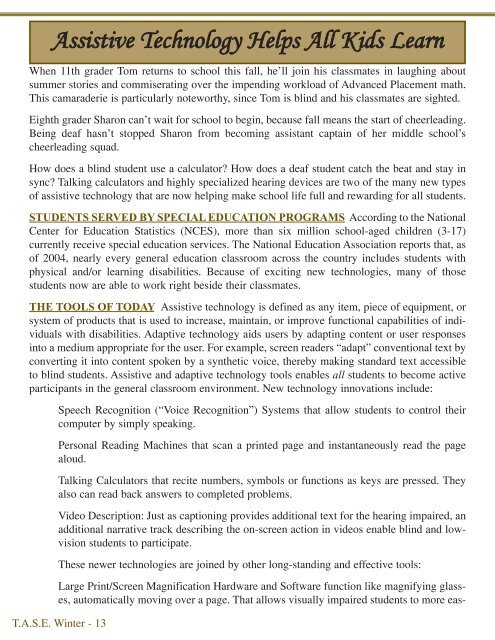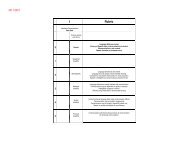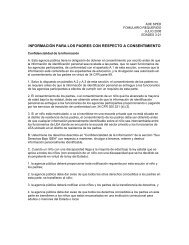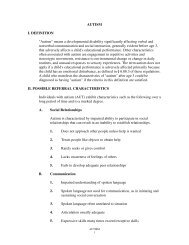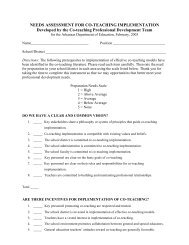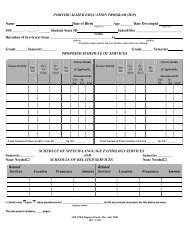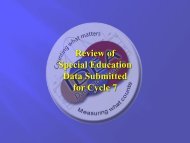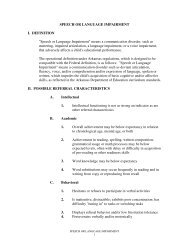The Arkansa - ADE Special Education
The Arkansa - ADE Special Education
The Arkansa - ADE Special Education
You also want an ePaper? Increase the reach of your titles
YUMPU automatically turns print PDFs into web optimized ePapers that Google loves.
Assistive Technology Helps All Kids Learn<br />
When 11th grader Tom returns to school this fall, he’ll join his classmates in laughing about<br />
summer stories and commiserating over the impending workload of Advanced Placement math.<br />
This camaraderie is particularly noteworthy, since Tom is blind and his classmates are sighted.<br />
Eighth grader Sharon can’t wait for school to begin, because fall means the start of cheerleading.<br />
Being deaf hasn’t stopped Sharon from becoming assistant captain of her middle school’s<br />
cheerleading squad.<br />
How does a blind student use a calculator? How does a deaf student catch the beat and stay in<br />
sync? Talking calculators and highly specialized hearing devices are two of the many new types<br />
of assistive technology that are now helping make school life full and rewarding for all students.<br />
STUDENTS SERVED BY SPECIAL EDUCATION PROGRAMS According to the National<br />
Center for <strong>Education</strong> Statistics (NCES), more than six million school-aged children (3-17)<br />
currently receive special education services. <strong>The</strong> National <strong>Education</strong> Association reports that, as<br />
of 2004, nearly every general education classroom across the country includes students with<br />
physical and/or learning disabilities. Because of exciting new technologies, many of those<br />
students now are able to work right beside their classmates.<br />
THE TOOLS OF TODAY Assistive technology is defined as any item, piece of equipment, or<br />
system of products that is used to increase, maintain, or improve functional capabilities of individuals<br />
with disabilities. Adaptive technology aids users by adapting content or user responses<br />
into a medium appropriate for the user. For example, screen readers “adapt” conventional text by<br />
converting it into content spoken by a synthetic voice, thereby making standard text accessible<br />
to blind students. Assistive and adaptive technology tools enables all students to become active<br />
participants in the general classroom environment. New technology innovations include:<br />
Speech Recognition (“Voice Recognition”) Systems that allow students to control their<br />
computer by simply speaking.<br />
Personal Reading Machines that scan a printed page and instantaneously read the page<br />
aloud.<br />
Talking Calculators that recite numbers, symbols or functions as keys are pressed. <strong>The</strong>y<br />
also can read back answers to completed problems.<br />
Video Description: Just as captioning provides additional text for the hearing impaired, an<br />
additional narrative track describing the on-screen action in videos enable blind and lowvision<br />
students to participate.<br />
<strong>The</strong>se newer technologies are joined by other long-standing and effective tools:<br />
Large Print/Screen Magnification Hardware and Software function like magnifying glasses,<br />
automatically moving over a page. That allows visually impaired students to more eas-<br />
T.A.S.E. Winter - 13


